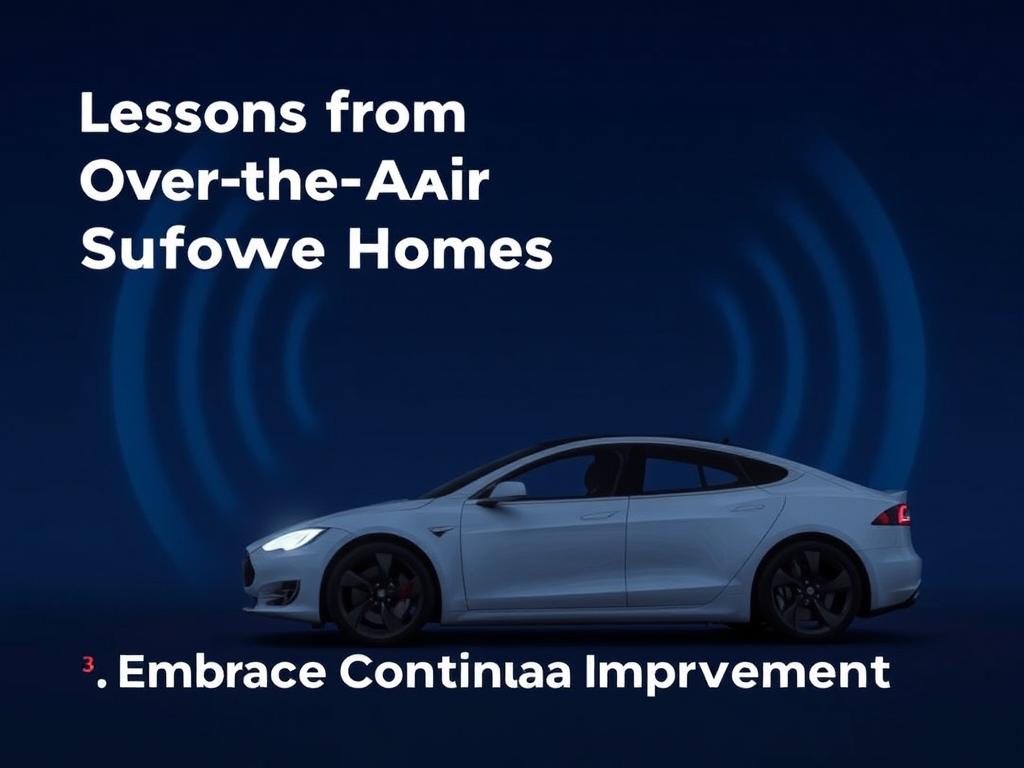Tesla, a trailblazer in electric vehicles, has revolutionized not only car design and performance but also the way software updates are delivered. Over-the-air (OTA) software updates have become a defining feature of Tesla vehicles. They allow the company to improve vehicle performance, add new features, and fix bugs without requiring drivers to visit service centers. This innovation has not only reshaped customer expectations but also offers valuable lessons for other industries embracing digital transformation. In this article, we’ll explore the core benefits, challenges, and practical takeaways from Tesla’s successful implementation of over-the-air software updates.
Understanding Tesla’s Over-the-Air Software Updates
Traditionally, vehicle software updates required a trip to a dealership or service center. This process was often cumbersome, time-consuming, and expensive. Tesla flipped this model by enabling cars to receive improvements and new functionalities remotely via the internet. From enhancing battery efficiency to unlocking autopilot features, Tesla owners experience continuous improvement long after their purchase.
Technically, OTA updates work through a secure cloud infrastructure. Tesla sends software packages directly to vehicles over Wi-Fi or cellular networks. Once downloaded, the car installs the update during idle times, minimizing driver disruption. This system ensures upgrades are both seamless and reliable.
Key Advantages of Tesla’s OTA Software Updates
The shift to OTA updates brings multiple advantages that go beyond mere convenience:
- Continuous Improvement: Tesla can push frequent updates to optimize performance, safety, and user experience over time.
- Reduced Recall Costs: Many software-related issues can be resolved remotely, avoiding costly and reputation-damaging vehicle recalls.
- Innovative Flexibility: New features, such as advanced driver-assist tools, can be activated after purchase, turning the car into a platform that evolves.
- Customer Satisfaction: Owners feel engaged and valued, witnessing real-time enhancements without extra effort.
- Competitive Advantage: This capability sets Tesla apart from traditional automakers, creating a technology-driven brand identity.
Challenges Tesla Faced with OTA Software Updates
While Tesla’s OTA approach has been largely successful, it was not without hurdles. These challenges provide a learning roadmap for other companies considering similar strategies.
| Challenge | Description | How Tesla Addressed It |
|---|---|---|
| Security Risks | Delivering software remotely introduces potential vulnerabilities to hacking or unauthorized access. | Tesla invested heavily in encryption, multi-factor authentication, and continuous threat monitoring. |
| Software Bugs | Rolling out updates to millions of vehicles risks glitches that could impact safety or reliability. | Tesla uses staged rollouts and remote diagnostics to identify and resolve issues quickly. |
| Regulatory Hurdles | Compliance with automotive safety regulations requires thorough validation of new software features. | Close collaboration with regulatory authorities and robust testing ensured compliance. |
| Connectivity Limitations | Not all customers have consistent internet connections for timely updates. | Tesla designed flexible update schedules and optimized update sizes for various network conditions. |
Lessons from Tesla’s OTA Software Update Model

Tesla’s journey illustrates several important lessons for both automotive manufacturers and companies in other sectors adopting OTA software updates:
1. Invest in a Robust Digital Infrastructure
Setting up a reliable cloud platform and secure communication channels is foundational. Tesla’s success depended on building trust that updates would not compromise data privacy or vehicle integrity. Businesses must prioritize cybersecurity and scalability from the outset.
2. Prioritize Customer Experience
Tesla ensured that updates were largely invisible and non-intrusive. Notifications are clear, and installations are timed to avoid driver inconvenience. Keeping users informed and in control fosters confidence and loyalty.
3. Embrace Continuous Improvement

Rather than settling for a “finished” product at sale, companies can benefit from an evolving model. Tesla’s OTA approach transforms the vehicle into an adaptable platform, constantly refined through user feedback and innovation.
4. Prepare for Regulatory Complexity
Regulatory bodies are still adapting to OTA software changes. Tesla’s proactive approach, including transparency with authorities and rigorous testing, helped minimize regulatory friction. Other industries should similarly anticipate and engage with evolving compliance frameworks.
5. Manage Risks Through Staged Rollouts

Releasing updates in phases allows early detection of potential issues, protecting customers and brand reputation. Tesla’s approach demonstrates the value of monitoring and real-time diagnostics as part of the deployment process.
Future Implications of Over-the-Air Software Updates
Tesla’s OTA software updates are a glimpse into the future of automotive technology and beyond. As vehicles become more connected and software-centric, traditional notions of car ownership and maintenance are rapidly changing. The concept of a “product” is shifting toward a dynamic experience that evolves with artificial intelligence, machine learning, and enhanced user interfaces.
Other industries—from consumer electronics to industrial machinery—can learn from Tesla’s model. Devices and systems that regularly receive OTA updates can reduce operational downtime, improve security, and adapt to user needs swiftly. This evolution unlocks new business models such as subscription services, feature unlockables, and data-driven personalization.
How Other Industries Can Apply Tesla’s OTA Lessons
- Smart Appliances: Manufacturers can add functionality and fix bugs without sending technicians to homes.
- Healthcare Devices: Critical software patches can be delivered rapidly to ensure patient safety.
- Industrial Equipment: Machinery can be optimized without costly production halts or manual interventions.
- Mobile Applications: Apps can leverage OTA updates for better performance and compatibility, reducing fragmentation.
Summary Table: Key Takeaways for Industries Adopting OTA Updates
| Takeaway | Application | Benefit |
|---|---|---|
| Secure Infrastructure | All connected devices | Protects users and reduces breaches |
| User-Centric Design | Consumer products | Increases customer satisfaction |
| Phased Deployment | Software products | Mitigates risk and improves stability |
| Regulatory Compliance | Healthcare, automotive | Ensures legal operation |
Conclusion
Tesla’s pioneering use of over-the-air software updates has transformed not only its cars but the entire automotive ecosystem. By leveraging secure, efficient, and customer-focused update mechanisms, Tesla has demonstrated how continuous software improvements can enhance product longevity and satisfaction. The lessons from their journey—investing in digital infrastructure, prioritizing user experience, adopting phased rollouts, and recognizing regulatory complexities—offer a roadmap for industries aiming to blend hardware and software into dynamic, evolving platforms. As OTA technology becomes the norm, more companies will need to rethink traditional product lifecycles and embrace this innovative approach to remain competitive in a rapidly digitalizing world.

